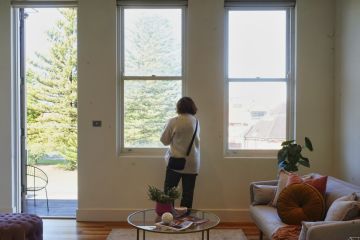A breath of fresh air: Indira Naidoo's top five plants for indoor living

I thought I was crazy about plants until I met Dr Fraser Torpy, a lecturer in plants and environmental quality at the University of Technology in Sydney.
“Oh, I talk to my plants,” Torpy openly admits as we talk on the phone from his laboratory where he conducts leading research into how plants detoxify our environment.
“It’s the best way to care for them. Ask them how they are and they will tell you,” Torpy says without a hint of embarrassment.
I’m an edible plant girl myself but there’s no denying that the biggest trend in plants at the moment is indoor greenery.
Open any lifestyle magazine and there are ornamental plants in macrame holders, plants on elegant wire stands, plants in terrariums, plants on plants.
Torpy says the trend is being driven by a growing awareness of the pollutants in our homes and the detoxifying benefits of potted plants.
“They’re wonderful at removing hydrocarbons, particulates (such as dust, dirt, soot, or smoke) and carbon dioxide,” Torpy says.
“But contrary to popular belief, it’s not actually the plants that do the hard work but the bacteria in the potting mix which literally eat up the pollutants and turn them into more good bacteria.”
Just one indoor plant can make a measurable difference to the air quality in your home.
Boston fern (Nephrolepis exaltata ‘Bostoniensis’)
“This plant is especially good in green walls. It effectively filters out considerably greater levels of particulate matter than all other tested plants in green walls that have ferns in them. It also looks great, grows fast and survives well.”
Spider plant (Chlorophytum comosum ‘Variegatum’)
“We much prefer the variegated spider plants. These are great because of survivability; they are unkillable. They also perform really well for CO2, and are especially good at removing the dangerous VOC formaldehyde.”
Kentia palm (Howea fosteriana)
“This plant needs quite a lot of light but when it does [get light] it removes CO2 extremely well. This is one of the few times we’ve found that one plant really outperforms others. A few near a sunny window should make a stuffy room a lot more habitable.”
Fiddle-leaf fig (Ficus lyrata)
“It’s quite good at removing all air pollutants. The special ability of this species is its stand-out tolerance to really bad air pollution. We tried for weeks to kill this thing off but it showed no effects at all. Pretty good looking too – often used as a specimen plant.”
Peace lily (Spathiphyllum wallsii) or umbrella plant (Schefflera spp.)
Peace lily (Spathiphyllum wallsii) or umbrella plant (Schefflera spp.)”These are good general choices: they do everything petty well, are resilient indoors and have the appearance that most people like most in indoor plants. We have chosen two here – peace lilies for low light, and umbrella plants for medium to high light spots.”
Indira Naidoo’s garden cookbooks The Edible Balcony and The Edible City are available at Dymocks. Naidoo is a guest presenter on Gardening Australia, Saturdays 6.30pm on ABC1.
We recommend
States
Capital Cities
Capital Cities - Rentals
Popular Areas
Allhomes
More







